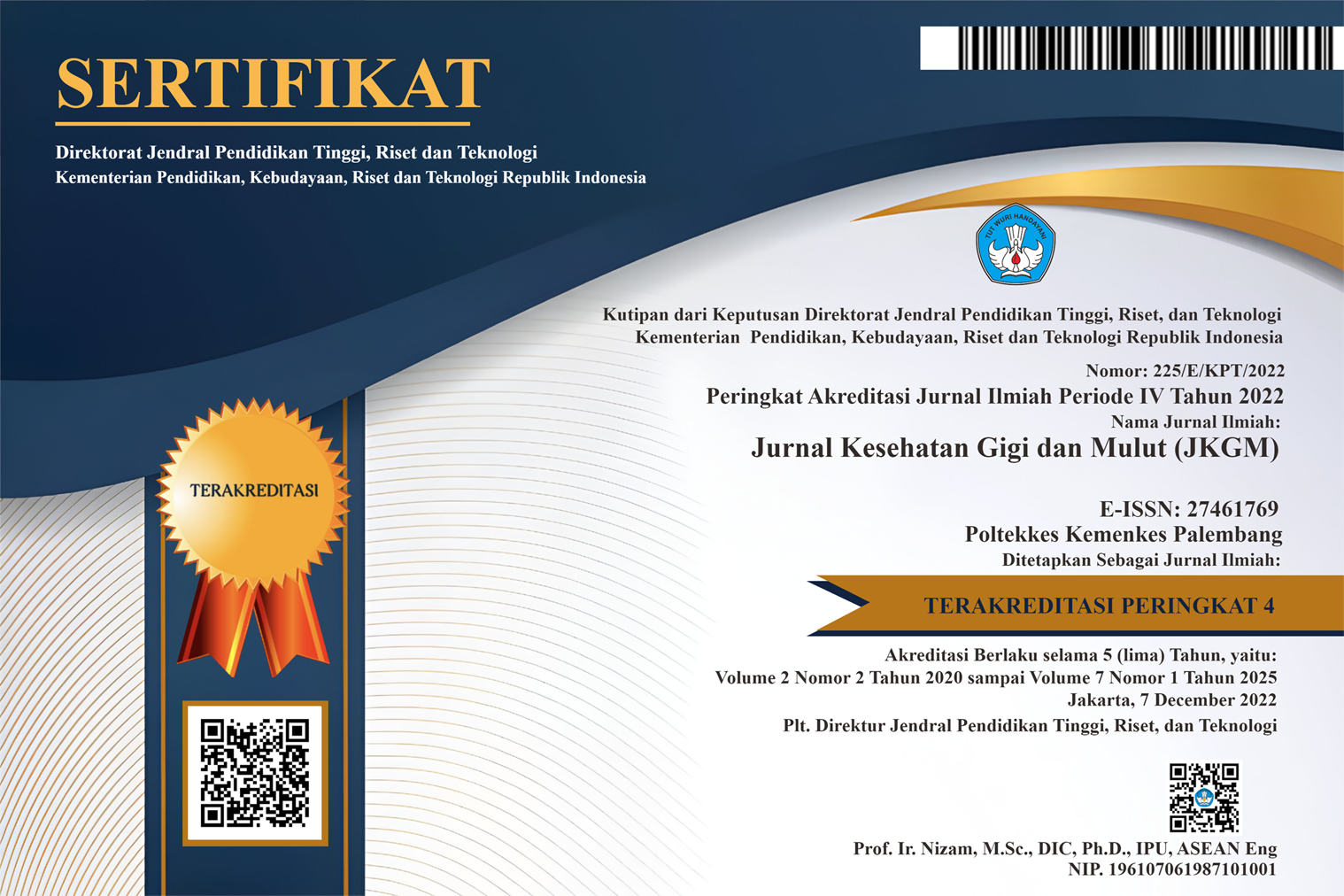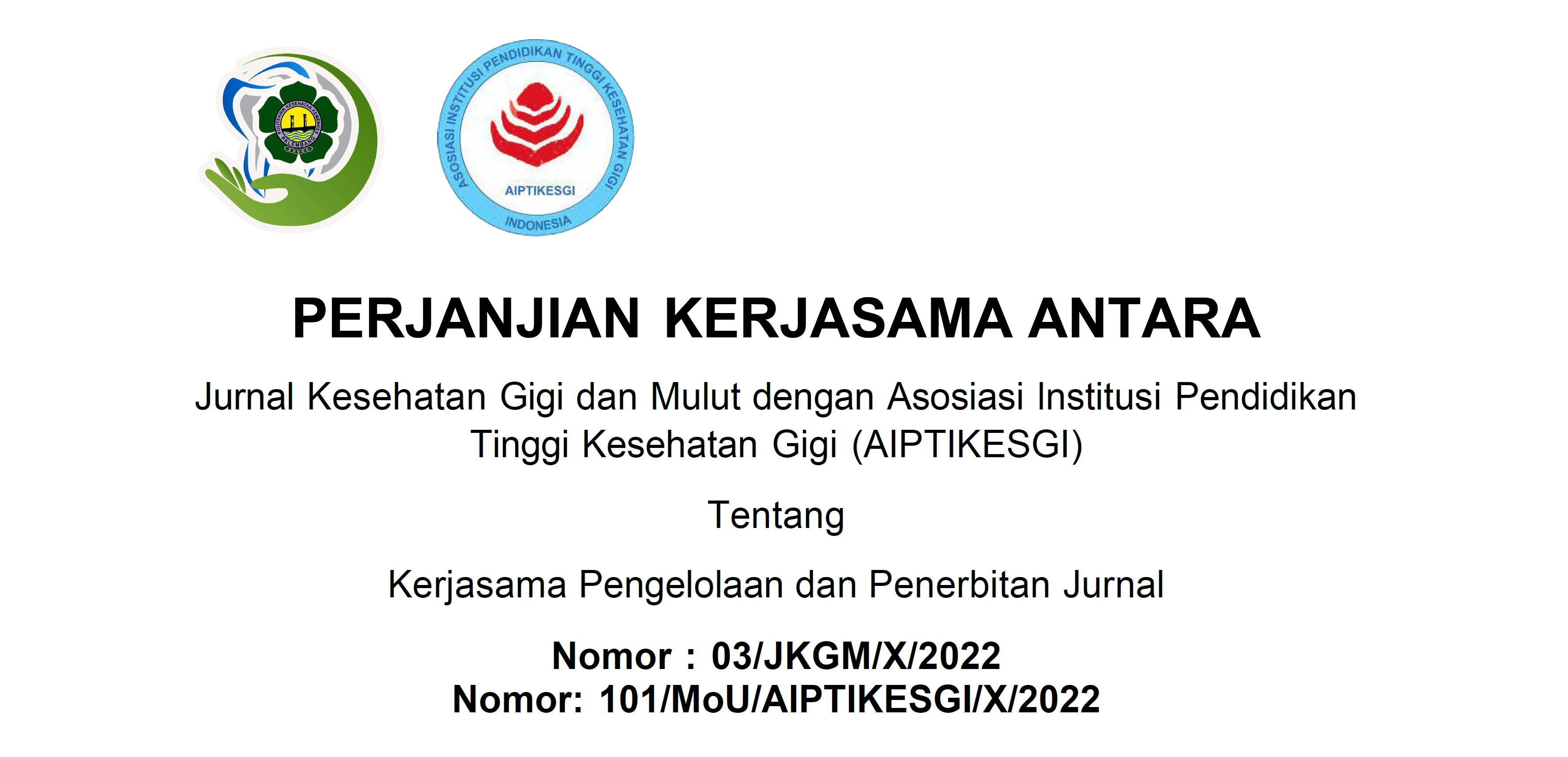PENGGUNAAN DETEKTOR KARIES PADA PREPARASI KAVITAS PRA-PERAWATAN PULP CAPPING (LAPORAN KASUS)
Abstract
Latar Belakang: Keberhasilan restorasi gigi yang mengalami karies bergantung pada pengambilan seluruh jaringan yang terkena karies. Prosedur ini dinilai secara konvensional dengan metode visual dan taktil. Namun hal tersebut bukan merupakan panduan yang dapat diandalkan mengingat sifat subjektifnya. Oleh karena itu pewarna pendeteksi karies (Caries detector dyes) dapat digunakan sebagai indeks objektif untuk diagnosis dan pengambilan karies.
Laporan Kasus: Seorang pasien perempuan berusia 22 tahun datang dengan keluhan gigi depannya terasa nyeri saat mengkonsumsi makanan dan minuman dingin. Hasil pemeriksaan menunjukan gigi 21 mengalami pulpitis reversible. Rencana perawatan gigi tersebut akan dilakukan pulp capping dengan follow up restorasi kelas IV komposit. Untuk memastikan semua jaringan karies terambil, maka saat preparasi kavitas dilakukan pengaplikasian pewarna pendeteksi karies.
Pembahasan: Kavitas yang telah diaplikasikan pewarna detektor karies akan membuat perbedaan yang jelas antara jaringan yang akan diangkat dan jaringan yang dipertahankan. Komponen pewarna detektor karies yaitu pelarut propilen glikol akan menembus serat kolagen lepas pada dentin yang terinfeksi yang menyebabkan pewarnaan serat kolagen terdegradasi oleh pewarna. Sehingga dapat memastikan perawatan yang konservatif dan menghindari terpaparnya pulpa.
Kesimpulan: Penggunaan pewarna pendeteksi karies selama preparasi kavitas dapat membantu mendeteksi jaringan karies yang tidak terdeteksi dengan penilaian visual dan taktil.
Kata kunci : Pewarna pendeteksi karies, pulp capping, preparasi kavitas
Copyright (c) 2024 Jurnal Kesehatan Gigi dan Mulut (JKGM)

This work is licensed under a Creative Commons Attribution-ShareAlike 4.0 International License.
Authors who publish with this journal agree to the following terms:
- Authors retain copyright and grant the journal right of first publication with the work simultaneously licensed under a Creative Commons Attribution License that allows others to share the work with an acknowledgement of the work's authorship and initial publication in this journal.
- Authors are able to enter into separate, additional contractual arrangements for the non-exclusive distribution of the journal's published version of the work (e.g., post it to an institutional repository or publish it in a book), with an acknowledgement of its initial publication in this journal.
- Authors are permitted and encouraged to post their work online (e.g., in institutional repositories or on their website) prior to and during the submission process, as it can lead to productive exchanges, as well as earlier and greater citation of published work















